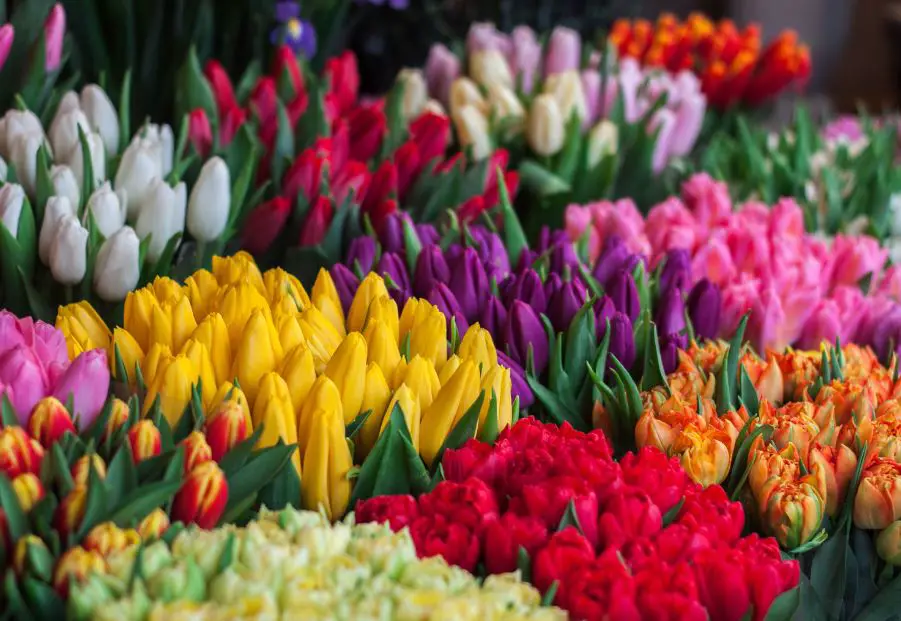Particularly when it comes to flowers, everyone has a favourite hue. While some gardeners like looking for the most uncommon flower hues, others have particular tastes regardless of how widespread they may be. What causes flowers to be coloured, then? Which are the most typical and uncommon?

The Secret of Flower Coloring
Light and chemical compounds and physics and chemistry are all part of the science of colour. An electromagnetic wave comprises tiny particles called photons; light is energy. A certain quantity of energy is included in each photon. Atomic chemical compounds, known as molecules, also contain various quantities of energy.
Whether photons are absorbed by an object or bounce off depends on the energy levels of the photons and the molecules making up the substance. The photon may penetrate the human eye and be seen as a certain hue if it escapes and bounces back.
You see the light a flower reflects, not the light it absorbs when you look at it. For instance, a marigold reflects a set of light wavelengths humans see as orange. It takes in different hues.
Plants benefited from colour as they developed. To entice pollinators, they created colourful flowers. Carotenoids and anthocyanins, two significant chemical substances with many sub-varieties, are responsible for petal colour.
We can create all the stunning and unique flower hues thanks to various combinations of these substances. A flower devoid of either chemical is white and uniformly reflects all visible light wavelengths.
What is the Most Common Flower Color?
This question does not have a definitive solution. Pollinators like vivid colours that are inside their visual field. This range differs somewhat from the range of colour vision in humans and varies depending on the species. For instance, hummingbirds can sense infrared and other hues in addition to red.
Although it varies by area, there is no established most frequent flower hue. For example, like flies, pollinators that are often disregarded choose lighter hues. They are drawn to white and light-coloured flowers. White flowers are more prevalent in areas where flies are the main pollinators.
Rare Flower Colors
Flowers need anthocyanins that are a little unstable to produce blue and purple. These hues are the most uncommon because of this. To create orange, red, yellow, and pink hues, carotenoids or stable anthocyanins are more practical. These hues are more prevalent.
Green flowers are also uncommon. Chlorophyll is the chemical that gives plants their green colour and is involved in photosynthesis, which is how plants produce food. Green flowers are also possible, although pollinators have a harder time telling them apart from leaves when they are coloured this way. Its rarity is probably due to this.
Numerous flowers also reflect ultraviolet light, which is invisible to human eyes. This hue is visible to honeybees; thus, flowers that generate it draw in more pollinators.
Some flowers have hues that are so uncommon they do not naturally occur. Black flowers, for instance, are wholly the product of human agriculture. For pollinators, a bloom that seems black but deep purple would be challenging to notice. This hue is uncommon, even among developed variations. Although making anything that needs such a high concentration of volatile anthocyanin chemicals is challenging, it has been done. In startling hues of man-made near-black, you may discover tulips, hellebore, calla lilies, petunias, pansies, orchids.
The topic of flower colouring is both challenging and intriguing. There are unmistakable hues that rule the world of flowers, all dependent on being pollinated and reproducing, even if no one can definitively answer the issue of whether a colour is the most frequent or unusual.

